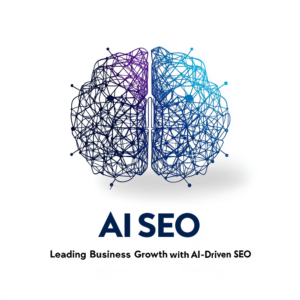In today’s digital landscape, a website’s performance is more crucial than ever. With users demanding instantaneous loading times and seamless navigation, businesses can no longer afford to overlook the importance of a well-optimized site. Enter the revolution of artificial intelligence (AI) and automation—a transformative force that’s reshaping the way we enhance website performance. By employing AI-driven tools and techniques, companies can not only streamline their operations but also deliver superior user experiences that keep visitors engaged and coming back for more. In this article, we’ll explore the untapped potential of AI and automation in boosting website performance, highlighting innovative strategies and tools that can definitely help you stay ahead of the curve in a fast-evolving digital habitat. Whether you’re a seasoned web developer or a business owner looking to improve online presence, understanding how to harness AI automation could be the key to unlocking unprecedented levels of efficiency and effectiveness.
Table of Contents
- Understanding the Role of AI in Website Performance Optimization
- Key AI tools for Automating Performance Analysis
- Implementing AI-Driven Strategies for Speed and Efficiency
- Measuring Success: Metrics and Best Practices for Continuous Improvement
- In Conclusion
Understanding the Role of AI in Website Performance Optimization
The integration of Artificial Intelligence (AI) into website performance optimization has transformed the way developers and businesses approach speed and user experience. With the ever-increasing demands for faster load times and seamless interactions, AI tools can analyze vast amounts of data to identify bottlenecks and optimize performance. By utilizing machine learning algorithms, these systems can continuously learn from user behavior, allowing for real-time adjustments that ensure websites are not only responsive but also tailored to the needs of individual visitors. This level of personalization enhances engagement, keeping users on the site longer and reducing bounce rates.
Implementing AI-driven solutions can yield significant improvements in various aspects of website performance, including content delivery, traffic management, and resource allocation. Key techniques involve predictive analytics and automated testing to optimize layouts and content dynamically. The following elements illustrate how AI contributes to these optimizations:
- Load Balancing: Dividing web traffic intelligently to prevent server overload.
- Image Optimization: Automatic resizing and format adjustments based on user device.
- A/B Testing: Instant analysis of user responses to different layouts or content types.
| AI Feature | Benefit |
|---|---|
| Predictive Caching | Reduces load times by preloading content based on user behavior. |
| automated Image Compression | Improves loading speed without compromising visual quality. |
| Content Recommendations | Enhances user engagement by suggesting relevant content dynamically. |
Key AI Tools for Automating Performance Analysis
To truly leverage the potential of AI in performance analysis, certain tools stand out in the marketplace. These key AI tools not only enhance the efficiency of monitoring website performance but also provide deeper insights into user behavior and system functionality. Tools like Google Analytics 4 offer advanced predictive metrics, while Hotjar utilizes heatmaps and session recordings to visualize user interactions. Additionally, platforms such as New Relic and Dynatrace utilize AI-driven analytics to proactively identify bottlenecks, ensuring that any performance issues are addressed before they impact the user experience.
Moreover, implementing automation solutions like Zapier and Integromat can streamline the process of collecting and analyzing performance data. This allows for real-time reporting and enables website owners to set triggers that automatically adjust settings based on performance metrics.To further illustrate the benefits of these AI tools, the following table summarizes how they contribute to enhancing website performance:
| Tool | Functionality | Benefits |
|---|---|---|
| Google Analytics 4 | Predictive metrics | Identify trends and drive data-led decisions |
| Hotjar | User interaction visualization | Improve UX through insights on behavior |
| New Relic | Proactive issue detection | Minimize downtime and increase site speed |
| Zapier | Automate workflows | Save time by integrating various tools |
Implementing AI-Driven Strategies for Speed and Efficiency
as businesses strive to optimize their online presence, leveraging AI-driven strategies can considerably enhance speed and efficiency. By incorporating machine learning algorithms into website design and management, companies can achieve remarkable results. Here are a few compelling methods to consider:
- Predictive Analytics: Utilize AI to analyze user behavior patterns and predict future actions, allowing for personalized content delivery that speeds up user engagement.
- Automated testing: Implement AI-driven tools for continuous testing to identify and resolve performance bottlenecks swiftly.
- Dynamic Content: Use AI to dynamically serve content based on user location, preferences, and behavior, ensuring a seamless browsing experience.
Moreover, AI can transform the backend processes that support website performance. With intelligent automation of tasks such as server management, inventory tracking, and user feedback analysis, businesses can maintain optimal speed and efficiency. Consider the following tools:
| AI Tool | Functionality |
|---|---|
| Chatbots | Enhance customer service by providing instant responses and freeing up human resources. |
| Content Optimization Tools | Analyze and suggest improvements for SEO and user engagement. |
| Load Balancers | Smartly distribute traffic across servers to enhance speed and reduce downtime. |
Measuring Success: Metrics and Best Practices for Continuous Improvement
To truly gauge the effectiveness of AI automation in enhancing website performance, it is essential to adopt a robust framework for measuring success. Key metrics such as load time, bounce rate, and conversion rate provide valuable insights into user engagement and site efficacy. By setting specific targets for these metrics, teams can quickly identify areas for improvement. Consider implementing a dashboard that pulls in real-time data to monitor these KPIs effectively. Here are some essential metrics to track:
- Page Load Speed: Aim for under 3 seconds to decrease bounce rates.
- User Interaction Rates: High interaction rates can indicate effective content and design.
- Conversion Metrics: Track led generation and sales conversions to assess financial impact.
Integrating best practices into your continuous improvement efforts can further enhance these metrics. Regular A/B testing is vital; it allows you to compare different versions of web pages or features to see which performs better. Moreover, feedback loops from user experience surveys offer qualitative data that complements your quantitative measurements. Establishing a routine review process ensures that findings lead to actionable adjustments. Below is a simple table summarizing best practices:
| Best Practice | Benefit |
|---|---|
| A/B Testing | Identifies effective design elements. |
| User Feedback | Uncovers pain points and improvement areas. |
| Data Monitoring | Ensures timely insights for adjustments. |
in summary
As we stand on the brink of a technological evolution, the integration of AI automation into website performance optimization is not just a trend—it’s a necessity. By harnessing the power of AI, website owners can unlock unparalleled efficiencies, enhance user experiences, and ultimately drive greater engagement and conversions. From real-time analytics to intelligent content delivery, the possibilities are boundless and the benefits considerable.As you consider the future of your online presence, remember that adopting AI solutions for performance enhancement is not merely about keeping up with industry standards. It’s about positioning yourself at the forefront of innovation, ensuring that your website is not only fast and responsive but also capable of adapting to the dynamic demands of your audience.
incorporating AI automation into your web strategy can be transformative, but the journey doesn’t end here. Continuous learning and adapting to new technologies will empower you to maintain a competitive edge in an ever-evolving digital landscape. Armed with the insights from this article, you are better equipped to embark on this exciting journey, leveraging AI to redefine what’s possible for your website.
Thank you for taking the time to explore the monumental potential of AI in enhancing website performance. We hope you feel inspired to implement these strategies and witness firsthand the remarkable improvements that AI can bring to your digital experience. Stay curious, keep innovating, and embrace the future of web performance!


